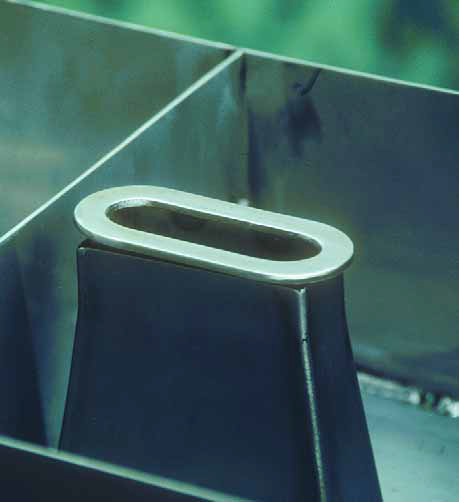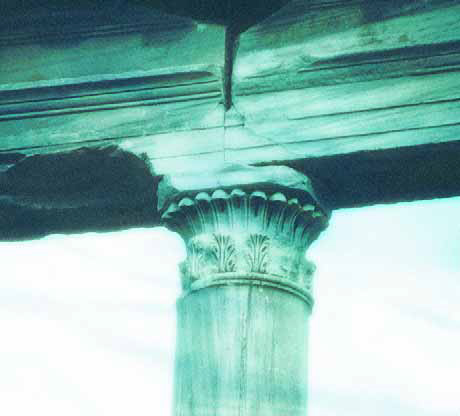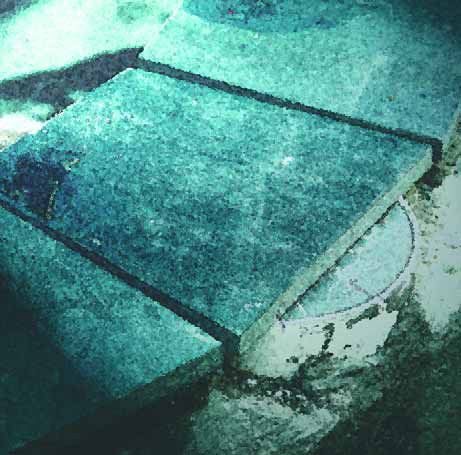materials
If you've been following this column for the past several issues, you already know a good bit about the magnificent (and magnificently difficult) project I completed late last year in the Malibu Colony. Many times in those columns, I mentioned (mostly in passing) a system of four deck-level laminar jets we planned on installing. As was the case with just about everything else on this project, incorporating the system of jets into the courtyard environment turned out to be far more complicated and challenging than we ever thought it would be. When all was said and done, however, we all agreed that meeting this particular challenge was
Whenever I receive a call for an initial meeting about a potential project, I always envision - before the client ever opens his or her mouth - that I will be adorning a multi-acre estate with a classic garden that will someday be written about in books and examined by landscape students throughout the world for generations to come. Doubtless, this call will be about the project that will bring me both fame and fortune! Now back to reality. Although there are plenty of large-scale landscape projects to be had, the smaller projects are much more plentiful. And they are often, as I have found,
The people who once inhabited modern-day Mexico's Yucatan peninsula were remarkably sophisticated. Their civilization was based on a deep-rooted knowledge of astronomy, mathematics, hydraulics and engineering. They quarried stone and moved it hundreds of miles on rollers, using this raw material and incorporating it into highly refined buildings, temples, roads and monumental works of art that rival those of the better-known cultures of ancient Europe, Africa and Asia. In 2001, I traveled extensively in the Yucatan to experience the region's culture and view masterworks from many centuries past. What I found was a sense of form, line and pattern in the ruins of
I spent ten days this last December traveling in Turkey - my second visit to the country in the past several years and a trip that reinforced vivid memories of just how mind-expanding a place it is. The Greek, Roman, Byzantine and Ottoman empires all held sway over this patch of land at times during the past 2,500 years, and throughout that long history, these and other great civilizations of both East and West have made their marks on the place. Situated at the crossroads of land- and sea-trade routes between Europe and Asia, Turkey has vast, rich reserves to drawn upon when it comes to
Great watershaping is, we believe, all about creating forms within a context. The thoughtful watershaper will survey all the key elements of a project while conjuring a mental picture that's as close to the architect's vision as possible - and then base the work that follows on a solid understanding of both the design and the setting. It's always most exciting when we're asked to consult with the designer about a project before the lot has been graded and the ideas are still flowing onto the sketchpad. In those cases where the designer and homeowner are all the same person and those initial discussions involve the designer's own living space, the nature of this interaction can truly be something special. At Pure Water Pools, we've had such a privilege on two occasions, both in working with Lynn Pries, a Newport Beach, Calif.-based interior designer who has spent much of her career creating high-end residences across the United States and Europe. These days, she mostly works on one project at a time, carefully selecting and purchasing a property herself and then seeing to every design detail, inside and out, from start to finish. So far, we've built
One of my guiding principles has to do with the fact that early decisions my clients and I make about materials have a huge influence on how my watershapes ultimately are designed and built. The project we've been following through the past few issues is a perfect case in point: The choice of the bluestone coping and of the one-inch glass mosaic tile for the pool's and spa's interiors started the wheels turning and definitely drove the early stages of the design process. As I've mentioned before, this project and its unforeseen problems (as well as clients who were at times unsure of exactly what
Since time immemorial, humans have sought out warm water for purposes of pleasure, bathing, relaxation and healing. That's a great thing for modern watershapers, almost all of whom are steadily asked to design swimming pools with attached spas or to set up stand-alone inground spas or to find ways to make portable spas work as part of a landscape or deck setting. I'd argue that hot water is even more important to contemporary lifestyles than it was to the Assyrians, Greeks or Romans of antiquity, given the stresses of modern life and the fact that we seem to have more of the leisure time required to enjoy a
If you can't see potential in every backyard you walk into, then you're in the wrong business. Yes, some projects are more inspiring than others, and some spaces seem to offer you more to work with than others. Without exception, however, our clients' yards present us with opportunities to develop programs that take advantage of what's there in ways that bring balance and harmony and interest to any setting. Speaking for myself, I'm no more energized in a project than when I get the opportunity to right a wrong and replace a past mistake with a fresh, interesting design - and that was certainly the case in the project discussed in this article and in my past several "Details" columns in this magazine. The setting was special, the clients were great and I was given free rein to work with color, shape and line in vivid, interesting and even startling ways - all in keeping with their wants and desires. SETTING THE SCENE To recap information from recent "Details," this pool/spa combination with its associated decking, walls, planters, outdoor cooking facilities and private garden area are located in a narrow yard at the base of a slope in Pacific Palisades, Calif. It's a spectacular
Water can be a central feature of any design, but in many cases it is just one element among many of equal (if not greater) importance. In the case of the project pictured here, the owners, a gentle and loving family, established and have maintained a vision of just the sort of warm and nurturing home and landscape they wanted, one in which the lives of family members and friends would be sustained, enriched and enlivened. Their vision (and their involvement with us) might have begun with the water, but it has since expanded to include
No matter how it's used - as a focal point in a design or as just another feature balanced among many - the thoughtful use of water offers landscape architects and other watershape designers a huge range of aesthetic opportunities. Indeed, the water's texture, reflectivity, sounds and sculptural qualities can all be used to enhance the observer's experience as he or she moves through an environment, and in a near-infinite number of ways. Regardless of how familiar one becomes with these attributes and using them in built spaces, the presence of water in a design often yields something new, interesting and even unexpected. Whether you use it as a visual transition, a physical destination, an expression of nature or an architectural statement, water is






















